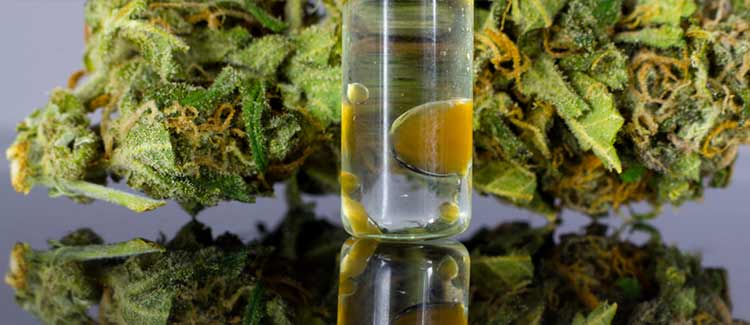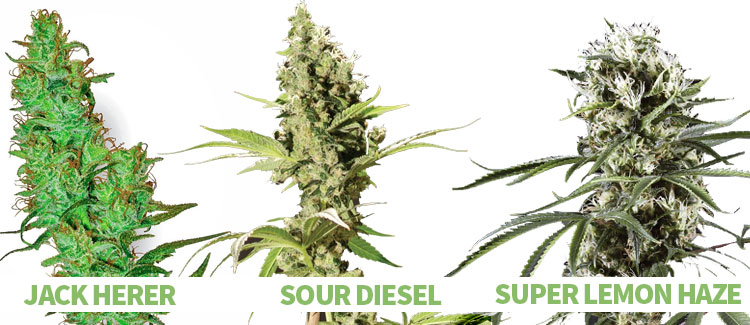Terpene profile: terpinolene

Terpinolene, along with many other terpenes, is used industrially for its potent scents and is showing vast potential in scientific studies due to its antimicrobial and antioxidant actions.
Terpinolene is responsible for exhibiting scents and flavors of wood and pine. This nostalgic and familiar scent is found elsewhere in nature, with terpinolene also being present within cumin, sage, rosemary, lilac, tea tree, conifers, and apples.
Cannabis is an extremely diverse plant, and thousands upon thousands of strains have been developed, each with their own effects, tastes, and aromas. Cannabinoids, compounds such as THC and CBD, often receive the limelight for the psychoactive states they induce. Yet, terpenes also play a large role in defining cannabis strains.
These aromatic molecules are responsible for many of the tastes and smells of different strains; they can also work synergistically with cannabinoids to affect the psychoactive or therapeutic value of a strain via a theory known as the “entourage effect.”
Terpinolene, along with many other terpenes, is used industrially for its potent scents. Specifically, terpinolene is used to “flavor” soaps, perfumes, and body care products. It can also be used as an insect repellent, which is one of the roles it inherently plays in the cannabis plant as a secondary metabolite.
WHAT ARE THE EFFECTS AND POSSIBLE MEDICAL BENEFITS OF TERPINOLENE?

Terpinolene stands out from many other terpenes found in cannabis due to its distinct effects. Most terpenes within the herb have been found to exhibit anti-inflammatory and analgesic (painkilling) properties, yet terpinolene does not. Instead, the molecule has been shown to produce antimicrobial, antioxidant, and sedative effects.
Terpenes have two primary categories of effects. They provide variance within cannabis strains in terms of flavor and aroma, but also have a potentially much deeper application in the future of medicine.
THE SCIENCE BEHIND TERPINOLENE
Numerous studies have explored the antimicrobial effects of terpinolene, discoveries that could lead to it being used to combat certain nefarious forms of bacteria. A 2005 paper documents a study that investigated the essential oil composition and antimicrobial activity of Diplotaenia damavandica, a plant species native to the country of Iran.[1] The essential oil of the species was found to contain terpinolene at levels of 20%.
Researchers extracted essential oil from the leaves, roots, and seeds from the plant and tested them against numerous microorganisms. It was found that all three of these oils displayed antibacterial activity against Bacillus subtilis, Staphylococcus aureus, Staphylococcus epidermidis, and Escherichia coli. The essential oil extracted from the leaves was most effective.
The authors of the study stated that terpinolene has been found to possess good antifungal activity, as well as antibacterial action against Propionibacterium, which causes acne.
Terpinolene has also been investigated for its sedative effects. A sedative is a substance that promotes calm and induces sleep, a category that can be especially useful for those experiencing anxiety, stress, and insomnia.
A 2013 paper published within the Journal of Natural Medicines explored the sedative effect of inhaled terpinolene in mice.[2] The results showed that the terpene caused sedative effects after nasal absorption into the body. The authors state that the molecular structure of terpinolene determines its sedative properties.
Terpinolene has also displayed antioxidant properties. Antioxidants are substances that inhibit oxidation and can protect DNA from the damaging effects of reactive oxygen species. A 2013 paper discusses the antioxidant and anticancer properties of terpinolene in rat brain cells.[3] The terpene was shown to have potent antiproliferative effects on brain tumor cells, as well as safe and pronounced antioxidant action.
TERPINOLENE-RICH CANNABIS STRAINS

Strains high in terpinolene offer a relaxing and sedative edge, perfect for users looking to kick back, relax, and relieve the stress of busy periods of work and life. Some hybrid varieties also offer a sativa buzz along with a relaxing body sensation. Here are several strains high in this terpene:
Jack Herer: a famous and award-winning hybrid created via the crossbreeding of parent strains Northern Lights, Skunk, and Haze. She features large quantities of THC and a high defined by euphoric, energetic, and uplifting states. The flowers of this strain offer scents and flavors of sweetness and citrus along with hints of pine.
Sour Diesel: a sativa-dominant variety created from parent strains Northern Lights, Diesel, Shiva, and Hawaiian. The flowers of Sour Diesel are loaded with THC levels of 19% and flavors of diesel and herbs. The high is focused, relaxed, and cerebral.
Super Lemon Haze: this tall, sativa-dominant variety features high levels of THC alongside low levels of CBD. She is loaded with a wide variety of flavors including lemon, fennel, and vanilla. The high comes on fast and is euphoric, uplifting, and balanced.
- ^ Zeitschrift fur Naturforschung, Essential Oil Composition and Antimicrobial Activity of Diplotaenia damavandica, retrieved November-16-2018
Link - ^ NCBI, The sedative effect of inhaled terpinolene in mice and its structure-activity relationships., retrieved November-16-2018
Link - ^ NCBI, Anticancer and antioxidant properties of terpinolene in rat brain cells., retrieved November-16-2018
Link




